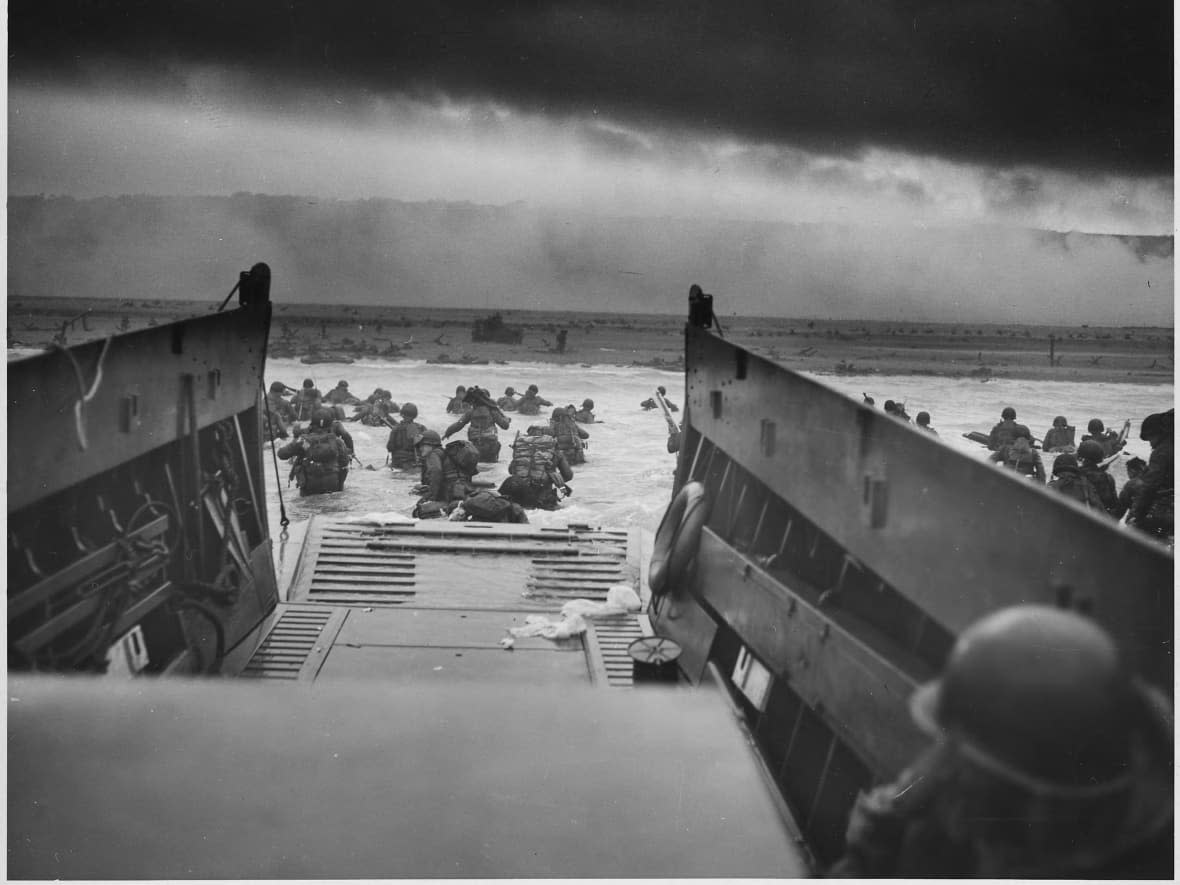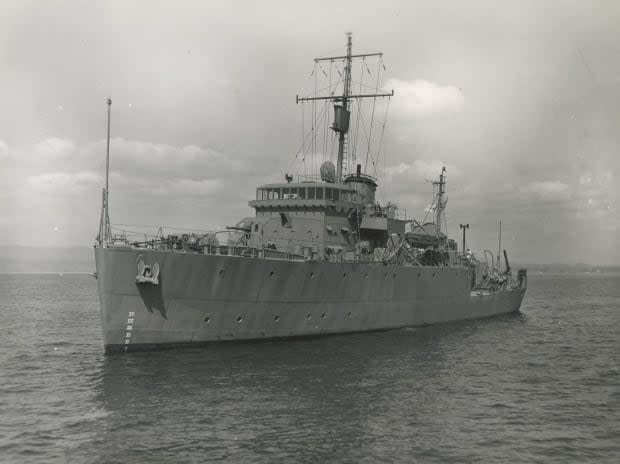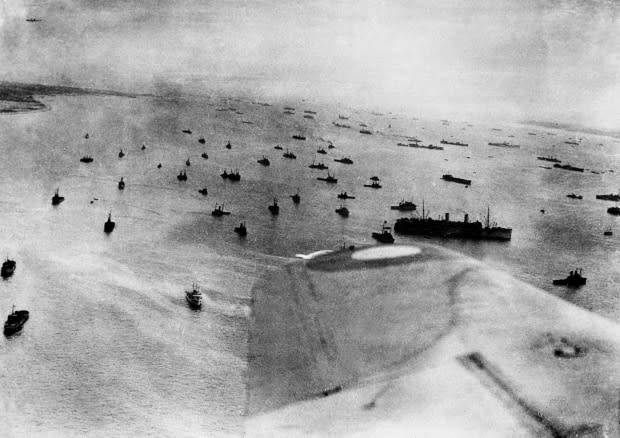When the Americans landed at Omaha Beach on D-Day, they had help from Halifax

Before the Americans could storm ashore at Omaha Beach on D-Day as part of the Allied invasion of Western Europe, their path to success was partly due to some ships from Halifax.
Minesweepers carried out dangerous and intricate work that helped rid parts of the English Channel of German mines, allowing roughly 150,000 Allied troops to invade Normandy, France, on June 6, 1944.
"When people look at the landings, they look towards the land," said Michael Whitby, a retired senior naval historian for the Department of National Defence. "Sometimes, you should get on the beaches of Normandy and look towards the sea and see what happened there."
It was in those waters that Operation Neptune, the naval component of D-Day, was carried out.
Minesweeping flotillas totalling around 250 ships were responsible for clearing 10 channels, corresponding to the five beaches the Allies would take — Utah, Omaha, Gold, Juno and Sword.

The channels were numbered from one to 10, west to east. For Omaha, this meant it had channels three and four.
Ten ships from the 31st Canadian Minesweeping Flotilla, which were from Halifax, were responsible for clearing the third channel. The fourth channel was cleared by the Royal Navy's 4th Minesweeping Flotilla.
"Even though you might think of Omaha as an American beach, obviously because it's American forces who are landing there, there's a multinational naval force off the coast, for instance," said Jeff Noakes, the Second World War historian at the Canadian War Museum in Ottawa.
"Same thing at Juno Beach. We think of Canadians landing there, but … not all the ships off the coast, for instance, were Canadian."
In early 1944, Canada sent the 16 vessels and personnel overseas for minesweeping training.
Besides the 10 used at Omaha Beach on D-Day, the remainder were used at Utah Beach as part of British flotillas, said Whitby.
To understand what minesweepers looked like at sea, Whitby said to think of a snowy Canadian airport runway in winter and how the plows are arranged in echelon to clear it.

Using this formation, the minesweepers would use equipment that extended up to a kilometre from the ship to cut the cables that attached the mines to the seabed.
Whitby said the English Channel is notorious for its strong riptides and currents, which meant the minesweepers had to adjust their positions frequently.
Poor weather added to the complications. While the invasion was originally scheduled for June 5, 1944, it was postponed a day because of the weather.
"We're not in placid waters by any means," said Whitby.
After minesweepers cleared the mines, a vessel called a danlayer laid buoys that had flags on them and flashing lights. This let the Allies know what areas were swept and that they should be safe if they stayed inside them.
High numbers of casualties were expected, but there weren't many for minesweepers on D-Day, said Whitby.
While five minesweepers were expected to clear each channel, there were spare vessels trailing behind ready to take over.

Even after D-Day, minesweepers continued to work off the Normandy coast because the German Luftwaffe would drop mines from the sky into the water in an attempt to prevent the Allies from getting supplies and troops to France.
Noakes said minesweepers were key to the success of the Allies during the war.
"Minesweeping and things like that are also generally not particularly glamorous aspects of the naval war, and so they don't necessarily attract as much attention as fighting against submarines or surface battles against enemy warships and things like that," he said.
Saving Private Ryan
The 1998 war film Saving Private Ryan begins with the Americans landing at Omaha Beach. Missing from the film is a nod to the minesweepers who cleared their path.
Noakes said while this is in part a cinematic decision, it's also a reflection of how successful the minesweeping efforts were on D-Day.

"If there had been heavy losses to German mines, there would be more recognition and acknowledgement these events that happened," he said. "But because the minesweeping efforts were so successful, other parts of the invasion were able to take place."
Less than a year after D-Day, the Germans surrendered to the Allies on May 7, 1945, bringing an end to the Second World War in Europe.
MORE TOP STORIES

